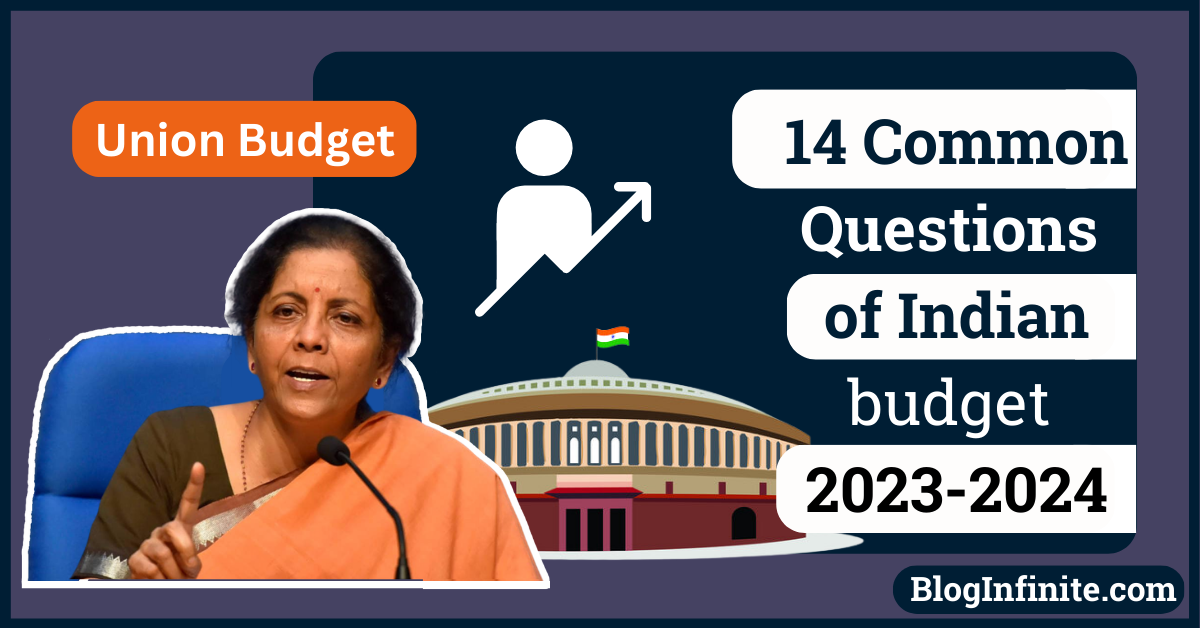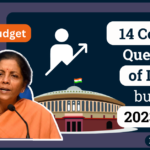Table of Content
The Indian budget for 2023 is a financial plan that outlines the government’s proposed expenditures and revenues for the next fiscal year.
Some common questions and answers about the Indian budget for 2023:
1.) What is the main focus of the Indian budget 2023?
The main focus of the Indian budget 2023 is to support the economic recovery from the impact of the COVID-19 pandemic and to boost growth through increased investments in infrastructure, healthcare, education, and other sectors. The budget also aims to promote domestic manufacturing, increase exports, and create more jobs.
2.) How is the government planning to fund its budget proposals?
The government is planning to fund its budget proposals through a combination of revenue sources, including taxes, non-tax revenues, and disinvestment proceeds. The budget also includes measures to increase the efficiency of tax collection and reduce tax evasion.
3.) What are some key tax proposals in the Indian budget 2023?
Some key tax proposals in the Indian budget 2023 include:
An increase in the personal income tax exemption limit for individuals from INR 2.5 lakh to INR 5 lakh.
A new tax slab for individuals with annual income between INR 5 lakh and INR 7.5 lakh, with a reduced tax rate of 15%.
A new tax slab for individuals with annual income between INR 7.5 lakh and INR 10 lakh, with a reduced tax rate of 20%.
An increase in the corporate tax rate for companies with annual turnover above INR 250 crore from 25% to 30%.
4.) What are some key sectors that are expected to benefit from the Indian budget 2023?
Some key sectors that are expected to benefit from the Indian budget 2023 include:
Infrastructure: The budget includes a allocation of INR 5.54 lakh crore for infrastructure development, including roads, railways, airports, and ports.
Healthcare: The budget includes a allocation of INR 2.23 lakh crore for healthcare, including the expansion of the Ayushman Bharat scheme and the creation of new medical colleges and hospitals.
Education: The budget includes a allocation of INR 93,224 crore for education, including the expansion of the Rashtriya Avishkar Abhiyan and the setting up of new schools and colleges.
Agriculture: The budget includes a allocation of INR 1.39 lakh crore for agriculture and allied sectors, including the expansion of the Pradhan Mantri Fasal Bima Yojana and the launch of new schemes for the benefit of farmers.
5.) How has the Indian budget 2023 been received by industry and experts?
The Indian budget 2023 has been generally well received by industry and experts, who have welcomed the focus on economic recovery and growth, as well as the measures to support sectors such as infrastructure, healthcare, and agriculture. Some of the key points of appreciation include:
The expansion of the Ayushman Bharat scheme, which aims to provide affordable healthcare to all citizens, has been hailed as a major achievement of the budget.
The increase in the personal income tax exemption limit, which is expected to benefit around 80% of taxpayers, has been seen as a positive move that will increase disposable income and boost consumer demand.
The focus on infrastructure development, including the allocation of INR 5.54 lakh crore for roads, railways, airports, and ports, has been welcomed as a key driver of economic growth and job creation.
The measures to support agriculture, including the expansion of the Pradhan Mantri Fasal Bima Yojana and the launch of new schemes, have been seen as a positive step towards improving the livelihoods of farmers and boosting rural development.
However, some experts and industry representatives have raised concerns about the potential impact of the budget on certain segments of the population, such as small and medium enterprises, and the sustainability of the government’s revenue projections.
6.) What is the fiscal deficit target for the Indian budget 2023?
The fiscal deficit target for the Indian budget 2023 is 6.8% of GDP, which is higher than the target of 3.5% set by the Fiscal Responsibility and Budget Management Act. The higher deficit is due to the impact of the COVID-19 pandemic on the economy, and the need for increased government spending to support the recovery.
7.) How is the government planning to reduce the fiscal deficit in the long term?
The government is planning to reduce the fiscal deficit in the long term through a combination of measures, including improving the efficiency of tax collection, reducing wasteful expenditure, and increasing non-tax revenues. The budget also includes measures to promote economic growth, which is expected to increase the government’s tax base and help reduce the deficit over time.
8.) What are the key sectors that the government is focusing on for disinvestment in the Indian budget 2023?
The key sectors that the government is focusing on for disinvestment in the Indian budget 2023 include:
Oil and Gas: The government is planning to sell a stake in state-owned oil and gas companies, such as BPCL, HPCL, and Gas Authority of India Limited (GAIL).
Banking and Financial Services: The government is planning to sell a stake in state-owned banks, such as Bank of Baroda, Bank of India, and Indian Bank.
Defense: The government is planning to sell a stake in state-owned defense companies, such as Bharat Dynamics Limited (BDL) and Mishra Dhatu Nigam Limited (MIDHANI).
Telecommunications: The government is planning to sell a stake in state-owned telecommunications companies, such as BSNL and MTNL.
9.) What are the key measures proposed in the Indian budget 2023 to support small and medium enterprises (SMEs)?
The key measures proposed in the Indian budget 2023 to support small and medium enterprises (SMEs) include:
An increase in the credit guarantee limit for SMEs from INR 2 crore to INR 5 crore, which will allow them to access larger loans without the need for collateral.
The launch of a new scheme to provide collateral-free loans of up to INR 3 lakh crore to SMEs, which will enable them to access credit at lower interest rates.
The introduction of a new definition of SMEs, which will allow more enterprises to avail of the benefits and schemes available for this sector. The new definition is based on the annual turnover of the enterprise, and includes micro, small, and medium enterprises.
The setting up of a new Public Sector Enterprise (PSE) Atmanirbhar Bharat Innovation Challenge, which will provide grants and support to SMEs to develop innovative products and technologies.
10.) What are the key measures proposed in the Indian budget 2023 to promote digital payments and financial inclusion?
The key measures proposed in the Indian budget 2023 to promote digital payments and financial inclusion include:
The launch of a new National Common Mobility Card (NCMC) scheme, which will enable the use of a single card for multiple purposes, such as travel, shopping, and withdrawing cash.
The setting up of a new National Public Credit Registry (NPCR), which will provide a comprehensive view of an individual’s credit history, and help improve access to credit for underserved segments of the population.
The introduction of a new framework for the regulation of digital lending, which will aim to improve the transparency and fairness of such lending practices.
The allocation of INR 1,500 crore for the expansion of the Jan Dhan Yojana, which aims to provide access to financial services for all citizens, including the creation of new bank accounts and the provision of insurance and credit facilities.
11.) What are the key measures proposed in the Indian budget 2023 to promote renewable energy and combat climate change?
The key measures proposed in the Indian budget 2023 to promote renewable energy and combat climate change include:
The launch of a new National Hydrogen Energy Mission, which will aim to develop a viable ecosystem for the production, storage, and use of hydrogen as a clean energy source.
The allocation of INR 1,500 crore for the development of offshore wind energy projects, which will aim to tap into India’s potential for clean energy generation from the sea.
The setting up of a new Solar Energy Corporation of India (SECI) II, with an initial outlay of INR 10,000 crore, which will aim to increase the deployment of solar energy across the country.
The allocation of INR 500 crore for the development of electric vehicle (EV) charging infrastructure, which will aim to support the adoption of EVs and reduce dependence on fossil fuels.
The inclusion of carbon capture, utilization, and storage (CCUS) in the list of infrastructure sub-sectors, which will enable the investment of INR 400 crore in the development of CCUS technology.
12.) What are the key measures proposed in the Indian budget 2023 to support the tourism industry?
The key measures proposed in the Indian budget 2023 to support the tourism industry include:
The allocation of INR 2,500 crore for the development of tourism infrastructure, including the expansion of the Swadesh Darshan and PRASAD schemes.
The launch of a new scheme to provide financial assistance to states for the development of tourist destinations and attractions.
The setting up of a new National Institute of Mountaineering and Allied Sports in Arunachal Pradesh, which will aim to promote adventure sports and eco-tourism.
The allocation of INR 300 crore for the development of the Buddhist Circuit, which will aim to promote the cultural and spiritual heritage of Buddhism in India.
13.) What are the key measures proposed in the Indian budget 2023 to support the sports industry?
The key measures proposed in the Indian budget 2023 to support the sports industry include:
The allocation of INR 2,500 crore for the development of sports infrastructure, including the setting up of new sports complexes and facilities. This is expected to improve the availability of sports infrastructure and facilities across the country, and encourage the participation of more people in sports.
The launch of a new scheme to provide financial assistance to states for the development of sports infrastructure and facilities. This is expected to encourage states to invest in the development of sports, and create a more competitive environment for sports in the country.
The setting up of a new National Sports Education Board, which will aim to improve the quality of sports education and training in the country. This is expected to help produce a more skilled and talented pool of sportspersons, and improve the performance of Indian sports teams at the international level.
The allocation of INR 500 crore for the development of the Khelo India programme, which aims to promote sports at the grassroots level and identify and nurture talent. This is expected to help identify and groom young talent in sports, and provide them with the support and resources needed to excel in their chosen sport.
14.) What are the key measures proposed in the Indian budget 2023 to support the film industry and the arts?
The key measures proposed in the Indian budget 2023 to support the film industry and the arts include:
The allocation of INR 900 crore for the setting up of a new National Museum of Indian Cinema, which will aim to showcase the history and achievements of the Indian film industry.
The allocation of INR 500 crore for the development of film cities, which will aim to provide state-of-the-art infrastructure and facilities for film production.
The launch of a new scheme to provide financial assistance to filmmakers, which will aim to support the production of films in various languages.
The allocation of INR 400 crore for the promotion of cultural and creative industries, which will aim to support the growth of sectors such as handicrafts, textiles, and performing arts.
The setting up of a new National School of Drama in Bharatpur, Rajasthan, which will aim to improve the quality of training and research in the field of drama and theatre.
Conclusion
The Indian budget 2023 has proposed a range of measures to support the growth and development of various sectors of the economy, including infrastructure, healthcare, education, agriculture, housing, defense, police and security, clean energy, small and medium enterprises (SMEs), digital payments and financial inclusion, renewable energy, the digital economy, the film industry and the arts, tourism, and sports.
The budget has also proposed measures to reduce the fiscal deficit, promote disinvestment, and improve the efficiency of tax collection and non-tax revenues.
Overall, the budget is expected to support the recovery of the economy from the impact of the COVID-19 pandemic, and drive long-term growth and development. However, the success of the budget will depend on the effective implementation of the measures proposed, and the ability of the government to address the challenges and opportunities presented by the rapidly changing economic and social landscape.
If you have any queries regarding this blog you can comment down below and also can contact us on our contact page. If you Want to write for us you can apply for it at Write For Us.













